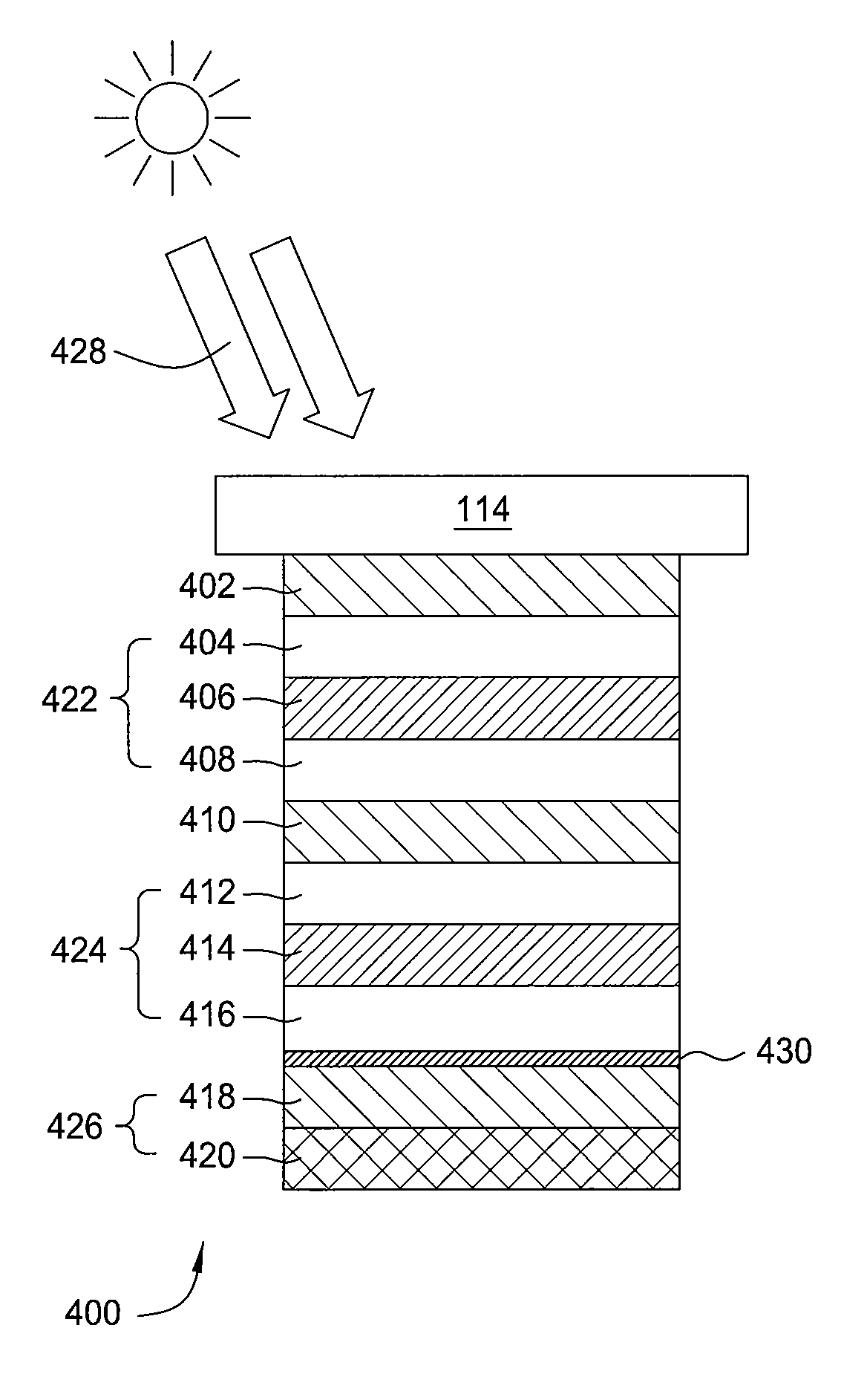Method and apparatus for improving photovoltaic efficiency
a technology of transparent conductive film and photovoltaic efficiency, which is applied in the direction of sustainable manufacturing/processing, final product manufacturing, vacuum evaporation coating, etc., can solve the problems of reducing the amount of sunlight converted to electricity, reducing the carrier mobility of pv cells, and reducing the photoelectric conversion efficiency. , to achieve the effect of high transmissivity
- Summary
- Abstract
- Description
- Claims
- Application Information
AI Technical Summary
Benefits of technology
Problems solved by technology
Method used
Image
Examples
Embodiment Construction
[0015]Embodiments disclosed herein provide methods for forming a transition layer between a semiconductor photoelectric conversion layer and a back contact layer of a solar cell. The transition layer generally reduces recombination of carriers at the interface and / or reflects light back into the photoelectric conversion layer to improve overall efficiency. The back contact layer is generally formed by sputter depositing a transparent conductive layer, such as a transparent conductive oxide layer (TCO layer) on the photovoltaic substrate. The transition layer is formed between the photoelectric conversion layer and the TCO layer, and is preferably a high transmittance layer to avoid introducing absorption. In one embodiment, the TCO layer is sputter deposited by supplying different process gas mixtures along with different target material selections to deposit a TCO layer having a desired dopant concentration formed therein. Composition of the TCO layer at its interface with another ...
PUM
| Property | Measurement | Unit |
|---|---|---|
| Fraction | aaaaa | aaaaa |
| Percent by atom | aaaaa | aaaaa |
| Time | aaaaa | aaaaa |
Abstract
Description
Claims
Application Information
 Login to View More
Login to View More - R&D
- Intellectual Property
- Life Sciences
- Materials
- Tech Scout
- Unparalleled Data Quality
- Higher Quality Content
- 60% Fewer Hallucinations
Browse by: Latest US Patents, China's latest patents, Technical Efficacy Thesaurus, Application Domain, Technology Topic, Popular Technical Reports.
© 2025 PatSnap. All rights reserved.Legal|Privacy policy|Modern Slavery Act Transparency Statement|Sitemap|About US| Contact US: help@patsnap.com



